Honor is officially back!
The Honor Magic 4 Pro is the first true flagship device from the brand since it split with Huawei a few years back. Naturally, we do need to point out that Huawei was sanctioned by the US government due to its close ties to the Chinese government, leading to a rapid demise of the brand since it was no longer able to work with many US tech companies and was barred from using the Google Play Store for app distribution on its phones.
Since then, Honor has been fully spun out as its own company and has been slowly regaining its footing. So far, it’s gained quite a bit of market share in China, but the Honor Magic 4 Pro is intended to be a halo device for the brand to help it recapture some attention in western markets as well.
That being said, the phone still seems to share quite a bit of DNA with some of Huawei’s devices when it comes to its design and software experience, but that doesn’t really detract from the incredible performance, sophisticated cameras and insanely fast wired and wireless charging speeds. At 1100 Euro, the Magic 4 Pro, could be the bold statement Honor needs to show us that it’s back and shouldn’t be ignored.
Design
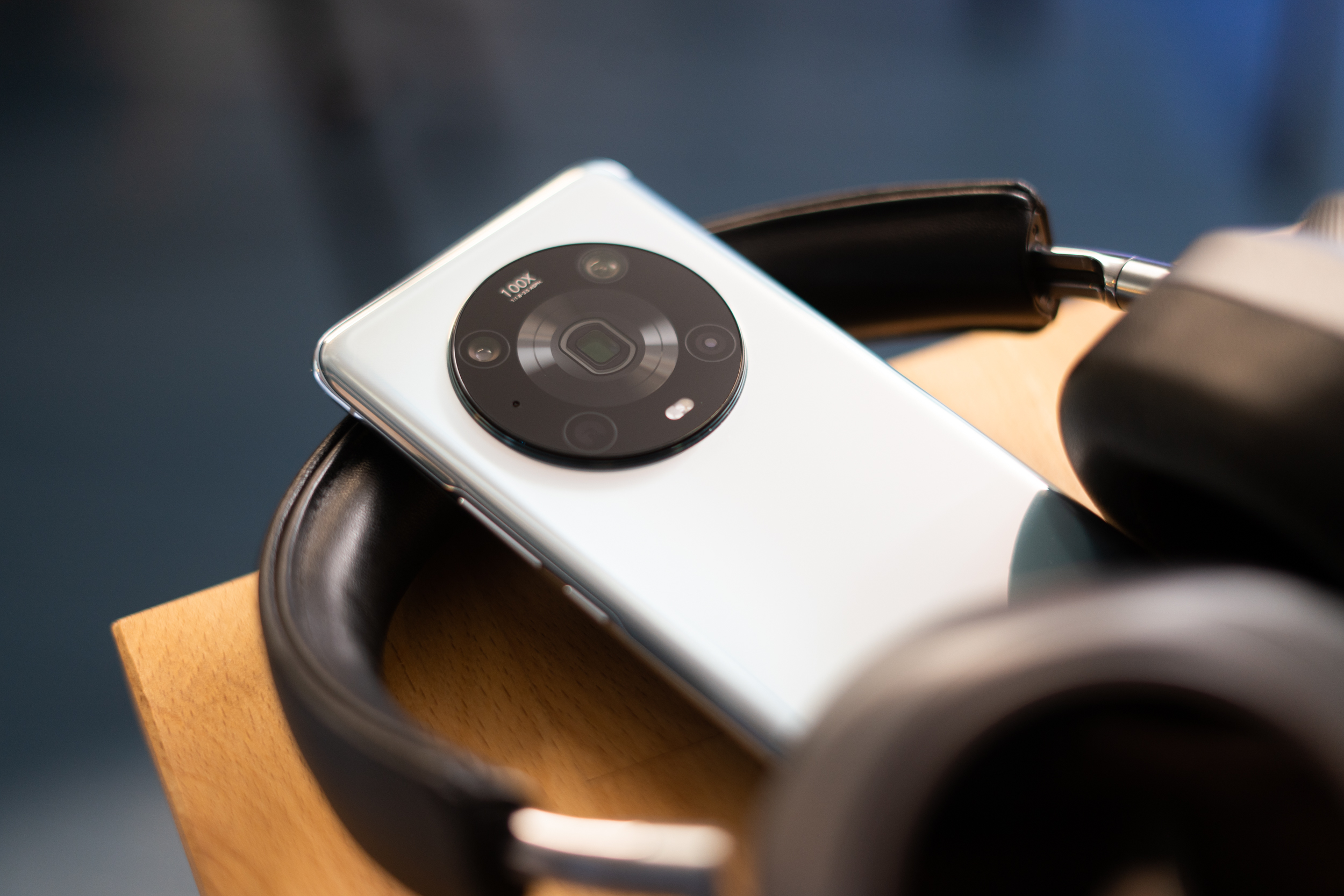
There’s no denying that the Honor Magic4 Pro is a beast of a phone, sporting a 6.81-inch display on the front and a massive, circular camera mobile on the back which Honor is dubbing the “Eye of Muse.”
From a design standpoint, the overall look and feel of the phone is in line with what we’ve seen from Honor in the past, specifically the Honor Magic3 Pro. It’s not necessarily a bad thing, but you’d probably have a hard time telling the two phones apart if they were side-by-side. That being said, the Magic4 Pro looks quite a bit different from the Samsung, Pixel, Xiaomi, and Oppo phones that are on the market, making it quite noticeable in a crowd.
As you’d expect from a premium smartphone, the device is built with a metal frame and Aluminosilicate glass on the back. After using the phone for more than a month already, it’s remained scratch-free, something that’s pretty rare, even with all the phones sporting gorilla glass Victus these days.
The power button and volume rocker on the side are perfectly placed and comfortable to use and the flat edges on the top and bottom of the phone are a nice design touch that you don’t see that often.
The only thing that looks out of place is the dual-front-facing camera cutout in the display. While a single camera cutout in a smartphone’s display has practically become the norm these days, Honnor and Huawei are among the few brands that add in a secondary camera to enable secure 3D face unlock on their devices. The awkward cutout is the price you have to pay for better security that allows the Magic4 Pro to be one of the new Android devices to allow facial recognition authentication for Google Pay.
Display
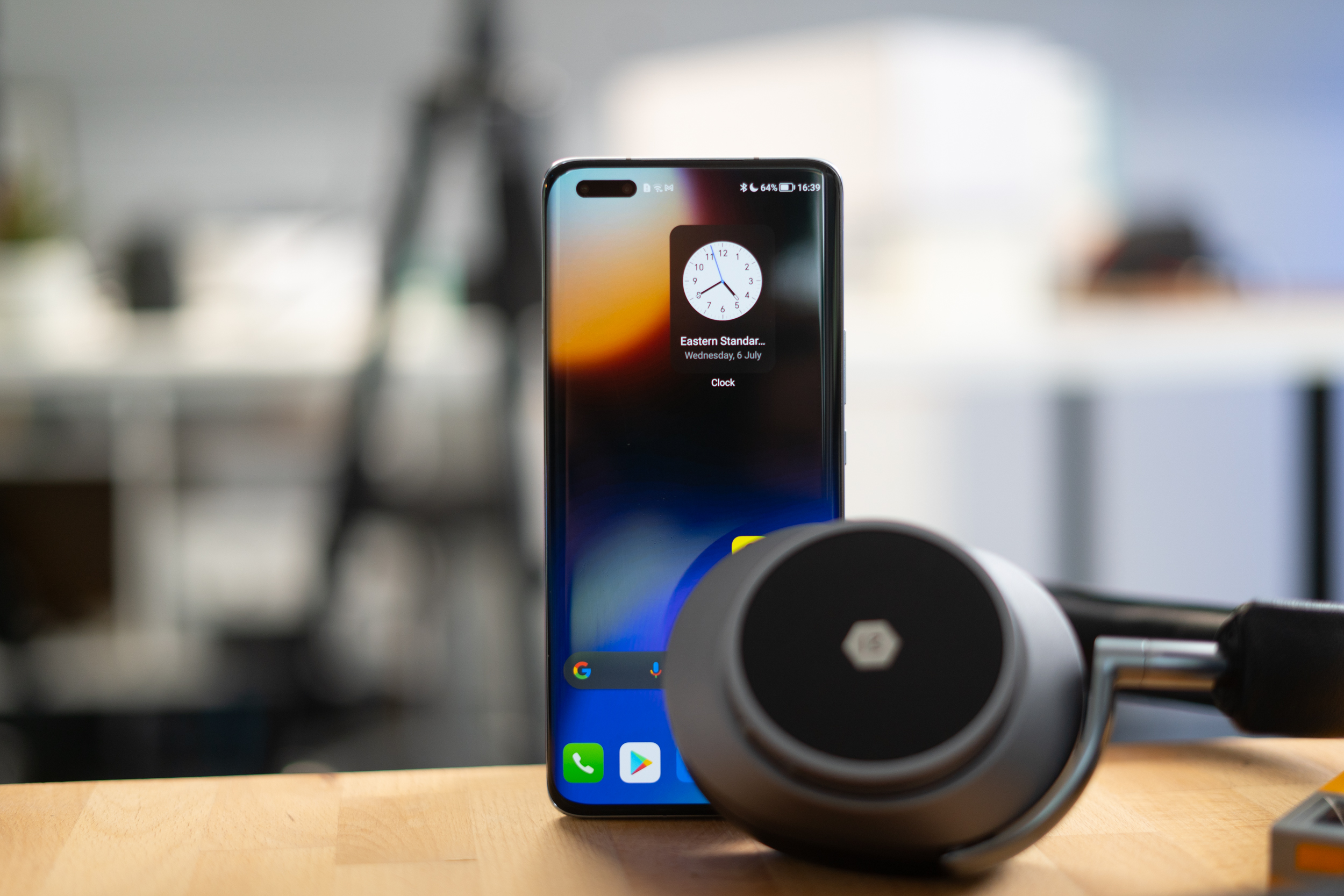
As mentioned before, the Magic4 Pro is a large device, thanks in part to its 6.81-inch curved OLED display. THat’s both a positive and a negative since the curved panel gives the phone a smaller physical footprint than some competing devices with an impressive 93.0% screen-to-body ratio, but it also makes the phone harder to use since the curved display is prone to accidental input from the edges of your hand when you try using it one-handed and can also be frustrating to type on as well.
Personally, I’m not a fan of curved displays, but it seems like Honor and other OEMs are still using them on their premium devices and pitching them as a luxury feature.
But if you can get past the issues brought on by the curved edges, the display on this phone is quite impressive. Viewing angles are spectacular and the 1,000 nits of peak brightness make it a great device to use outside in direct sunlight. The curved edges might add a bit of unwanted glare, but you can easily bump the brightness up enough to overcome that issue.
The QHD+ resolution of the panel delivers crisp visuals throughout the UI and while watching movies and the LTPO panel delivers dynamic 10-120Hz refresh rates which is great for when you’re gaming, but also gives you noticeable power savings with the slower refresh rates when you’re looking at static content in the display.
Performance
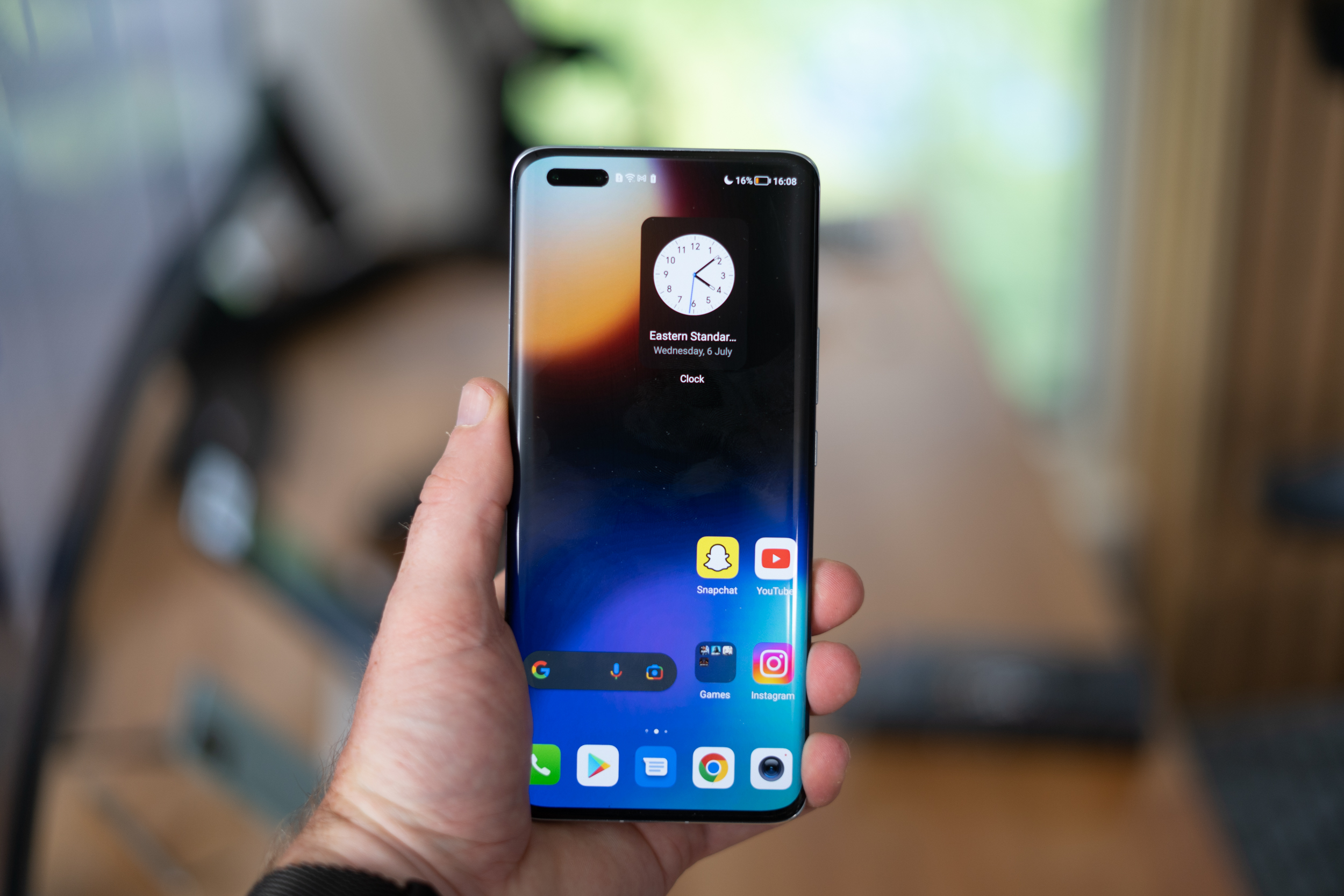
As you might expect, Honor’s new independent identity from Huawei means the Magic 4 Pro isn’t powered by a Kirin Chipset. Instead, the device is using the same Snapdragon 8 Gen 1 as we’ve seen on pretty much all other flagship devices in 2022, paired with 8GB of RAM and 256GB of storage on the base model. If that’s not enough, you can always upgrade to 12GB of RAM and 512GB of storage.
For day-to-day use, the performance of this phone is spectacular. Apps launch incredibly fast and perform just as well as they do on other devices. While some may think the 8GB of RAM might be too little for some serious multitasking on this phone, I didn’t find it to be an issue at all.
If you’re thinking about picking this phone up for gaming, Honor’s also slapped on its own GPU Turbo X software turning that pushing the chipset even harder while playing games to offer the best performance possible. It’s hard to say if the gaming experience is any better on this phone when comparing it to the Galaxy S22 Ultra or a OnePlus 10 Pro, but the benchmark scores for the phone outperformed all other non-gaming-specific flagship devices we’ve tested this year.
Battery Life and Charging
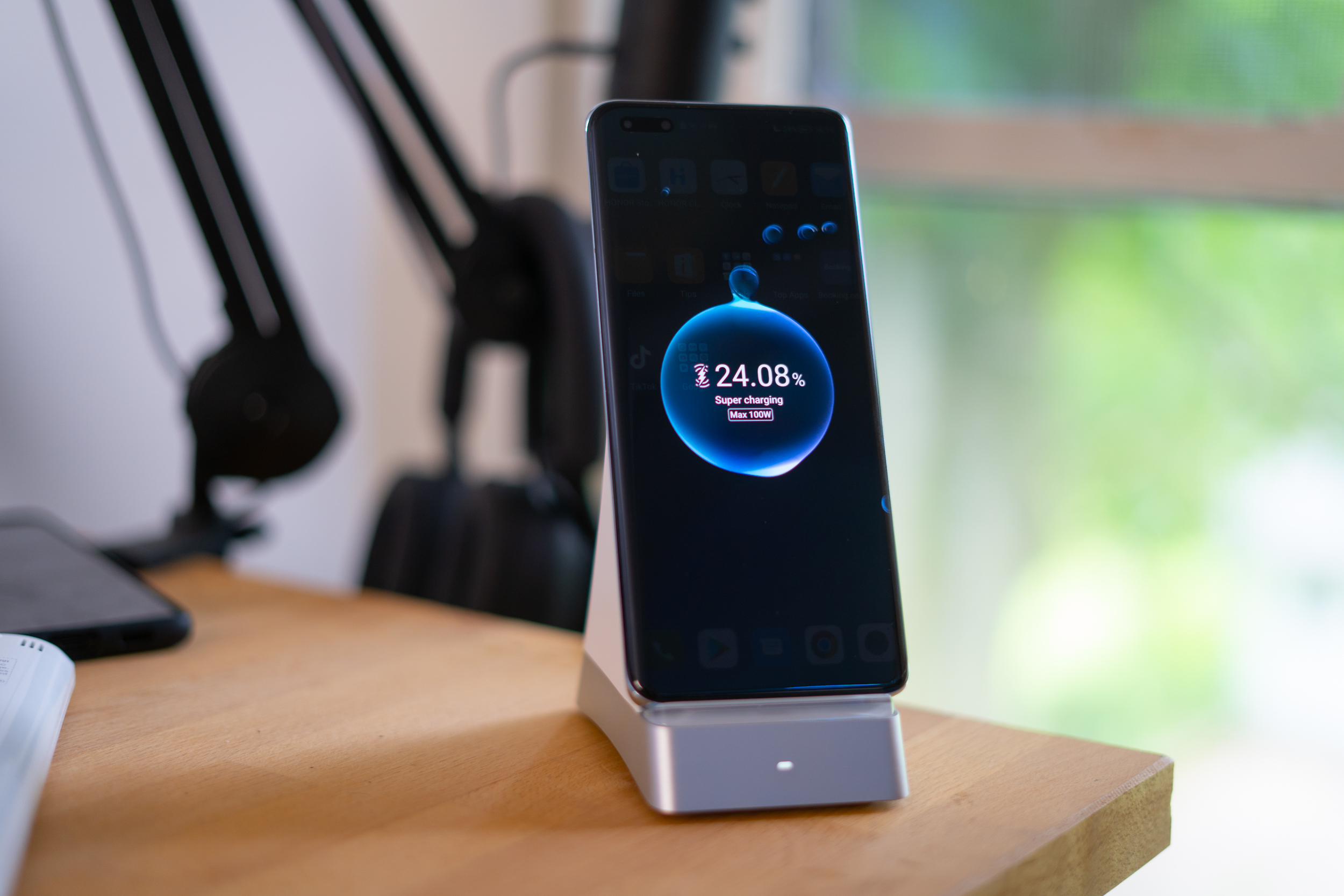
The only downside to the phone’s incredible performance numbers is the fact that the battery inside the Honor Magic4 Pro is slightly smaller than what we’ve seen on other flagship devices. The 4,600 mAh cell is 8% smaller than the typical 5,000 mAh battery we’ve seen on most competing devices. We’re not sure exactly why Honor chose to use a smaller battery, but we’re assuming there wasn’t any extra room inside the shell of the phone.
If you’re constantly pushing the phone to its limits by putting in a few hours of gaming each day or constantly taking photos or recording videos, you’ll likely need to top off the battery sometime in the afternoon to ensure you can make it into the late hours of the evening. But if you’re not a big mobile gamer, you should be able to finish off a long day with a 10-15% charge left.
The good news is that Honor is one of the new brands that still thinks you deserve a charger included in the price of the phone – and not just any charger at that. The Honor Magic4 Pro comes with a 100W charger that can take the phone from 0% to 100% in just 30 minutes. And if that wasn’t enough, the phone is also compatible with Honor’s 100W wireless charger that delivers a 50% charge in 15 minutes. The wireless charger takes about 45 to 50 minutes to deliver a full charge, but that’s less than half the time most other devices require. Just keep in mind that the built-in fan in the wireless charger is quite noticeable when it’s in use, even from across the room.
Software

Despite the fact that Honor is no longer under the Huawei umbrella, the software experience on the phone still looks and feels the same as it did two years ago. Honor’s Magic UI 6 software skin really hasn’t added visibly new Android features in the past few years. It’s as if the development team spent all its time stripping out all the last remaining software integrations with Huawei and forget to add any of the material stylings and features from Android 12, despite the fact that the phone is running on the latest version of Android.
The software experience is also quite buggy with jittery animations and the occasional app crash. I’d compare it to the issues Google’s been having on its Pixel 6 devices since launch. It’s definitely not a deal-breaker as the phone works perfectly fine most of the time. Hopefully, Honor is working on a software update or two that will address the issues.
As far as the look and feel of the software goes, Magic UI 6 is an acquired taste since it deviates quite a bit from the traditional Android UX. One example is that you have to pinch the homescreen to pull up the menus for changing the wallpaper or adding widgets rather than the usual long-press. Honor also has also muddied the waters a little by changing the name of Widgets to Cards. You get used to these types of changes after playing around with the device for a few hours, but I honestly had to do a lot more digging around on this device than I usually do to get things set up to my liking.
Cameras

When the Honor Magic4 Pro was initially unveiled, I was incredibly excited to test out the camera features of the device. Honor smartphones had always delivered great cameras, pulling in the best tech they could from Huawei’s side of the business, so I was curious to see what they’d be able to deliver o their own.
The massive “Eye of Muse” camera module on the back of the device may look like there are five cameras on the back of the Honor Magic4 Pro, but there are really only 3 usable cameras: a 50MP sensor for the main camera, a second 50MP sensor for the 122˚ ultrawide camera and a 64MP sensor for the 3.5x periscope telephoto camera. The other two sensors on the back are an 8×8 ToF depth sensor to assist with autofocus and a flicker sensor.
While the technical capabilities of the cameras is impressive, the overall experience falls a bit short. Shooting with the main camera delivers some impressive results, as long as the scene is well lit. The issue is that Honor didn’t add optical image stabilization for the main camera, limiting its capabilities in low light conditions. Its dynamic range and sharpness are commendable when the lighting is right, but the camera starts bumping up the ISO significantly when lighting conditions aren’t favorable. This leads to softer images, even when using the dedicated night mode for longer exposures.
The ultrawide camera with its 122˚ lens manages to live up to my expectations. As with all ultrawide cameras with such a wide field of view, the sharpness does drop off a little around the edges, but that’s to be expected. I’ve always preferred ultrawide cameras that give you the widest field of view possible, unlike the mundane 114˚ lens used by Google on the Pixel 6. I love the dramatic perspective offered by this camera, allowing you to capture everything in front of you.
The 3.5x periscope telephoto lens and its 64MP sensor work really well if the lens is activated properly by the camera app. It’ll explain more a little further down.
Usually, we don’t see periscope cameras used on telephoto cameras with a 3.5x focal length, which means the sensor being used is much larger and can be used for incredible portrait shots with a blurred background if your subject isn’t too far away. That being said, despite having a focus distance of about 30 inches, the camera app won’t actually switch to the telephoto camera unless the object you’re pointing it at is around 8-10 feet away. Anything closer than that and it will simply deliver a digital zoom on the main camera. To get around this software limitation, you have to first focus on an object further away and then frame the object or person you want to capture in your shot.
This same issue pops up in video mode as well but gets even worse since the camera app automatically jumps to 5x zoom with the on-screen button, though you can manually pull things back to 4x before it switches to digital zoom with the main camera sensor for anything below that.
Despite all that, the results from the zoom camera are great, even when you take things up to 10x with the built-in hybrid zoom feature. Anything over that really isn’t usable, despite Honor prominently featuring a 100x label on the camera module.
Honor also deserves some credit for enabling LOG video capture at 4K/30, though it’s only available for the main camera sensor. When recording in standard mode, the three cameras on the back can capture 4k/30 video and are able to switch between the different sensors while recording a single video file. The transition between the sensors can be a bit jarring and isn’t nearly as smooth as what you get on Samsung on Google’s smartphones, but there’s a chance Honor can improve that later on with a software update.
As for the selfie camera, the phone is equipped with a 12MP sensor that can capture 4k video and a 100-degree wide-angle lens. As with its rear cameras, Honor’s computational photography isn’t quite as good as what you will get from the Pixel smartphone, so you will find highlights that are blown out from time to time or you might get images that are a bit soft in low-light conditions. But if you’re careful of how you’re framing your shots, the Honor Magic4 Pro is capable of capturing some impressive selfies.
Final Thoughts

On paper, the Honor Magic4 Pro is a contender that could go head-to-head with the Samsung Galaxy S22 Ultra, but it can’t quite live up to those expectations in the real world. Honor still has its work cut out for itself if it wants to truly compete in the premium flagship segment in Europe and other markets.
The hardware is on point, Honor’s software team needs to deliver one or two updates before the Magic4 Pro truly shines. The good news is that Honor is back where it belongs, filling the void left by Huawei and giving us more options on the high end of the market.
Honor Magic4 Pro Rating: star_fullstar_fullstar_fullstar_fullstar_empty (4.0 / 5)
The Good
- Performance
- Design
- Display
- Charging speeds
The Bad
- Software
- Minor camera issues
The Bottom Line
The Honor Magic4 Pro is a solid first step towards Honor’s return to dominance in the market. It’s not quite as good as the Galaxy S22 Ultra or the OnePlus 10 Pro, but it’s a great alternative if you’re looking for something that stands out in a crowd.







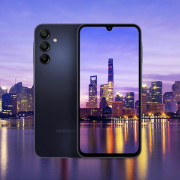


Comments